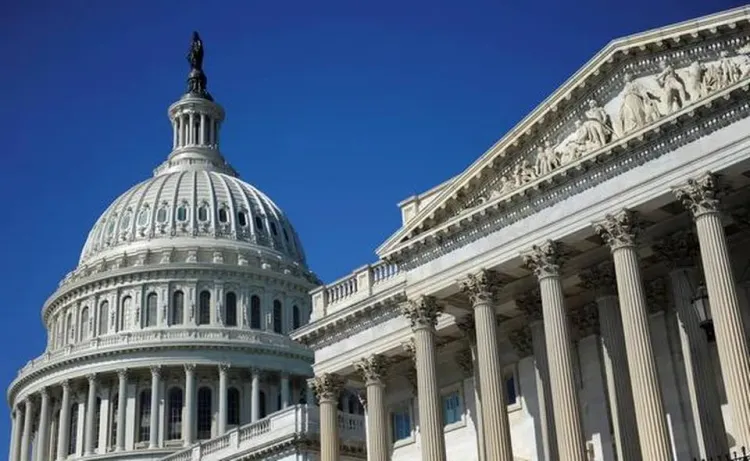What Led to the Shutdown of the US Government?

Synopsis
Key Takeaways
- US government shutdown initiated due to political standoff.
- Funding proposals from both parties rejected.
- Thousands of federal employees furloughed.
- Essential services remain operational.
- Continued negotiations are crucial for resolving the impasse.
New York, Oct 1 (NationPress) A significant portion of the US government came to a standstill at midnight on Wednesday due to a standoff between President Donald Trump and the Democrats, resulting in a cessation of funding for governmental operations with no indications of an immediate resolution.
Republicans and Democrats proposed bills aimed at providing temporary funding to sustain government functions until November 21, yet both proposals were rejected, thereby shutting down all but essential services and leading to layoffs of thousands of employees.
They were expected to make another effort to address the bill on Wednesday, but the outlook was bleak.
The division over social program funding and the size of the budget split the two parties, leading to the failure of their proposed resolutions.
The Senate was slated for another voting session later in the day, but the likelihood of resolving the standoff appeared minimal.
Essential services such as air traffic control, security, defense, immigration, and border control remained unaffected by the shutdown.
Both parties pointed fingers at each other for the impasse after failing to engage in meaningful negotiations with Trump.
Among the demands from the Democrats was the restoration of cuts to various healthcare programs, which the Republicans opposed, claiming that all their suggested changes would incur costs of $1 trillion.
The Republican bill, which passed in the House of Representatives, faced opposition from Democrats due to its inclusion of funding cuts.
With no complete budget approved, Congress was required to authorize temporary funding while they worked on the budget.
The most recent government shutdown occurred during Trump's last term, lasting 35 days from December 2018 to January 25, 2019.
Although the Republicans hold a majority in both chambers of Congress, they lack the 60 votes necessary to pass legislation under Senate rules.
Vice President J.D. Vance expressed on Fox News: "You don’t shut the government down, you don’t hold the government hostage, simply to negotiate healthcare costs."
Senate Democratic leader Chuck Schumer criticized the Republicans for not engaging in negotiation at all.
In a joint statement, he and House Democrat leader Hakeem Jeffries asserted: "After months of making life more difficult and costly, Donald Trump and the Republicans have now shut down the federal government because they refuse to safeguard the healthcare of the American populace."









